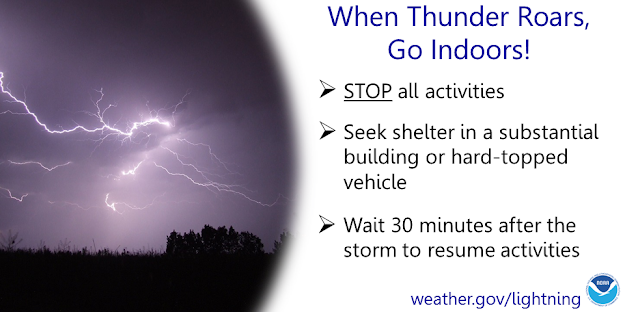As summer temperatures soar across Central Russia, many seek refuge by the water – a natural escape that, paradoxically, can become a perilous trap during sudden thunderstorms. Recent tragic events have cast a stark light on the often-underestimated dangers of lightning strikes, prompting experts to remind us: when thunder rumbles, safety is paramount. But what exactly do specialists advise, and can something as simple as rubber flip-flops truly make a difference between life and death?
The Unpredictable Fury: Recent Tragedies and the Science of Lightning
Just recently, a devastating incident unfolded in the Tula region, where three individuals, including a child, lost their lives to a lightning strike while at a beach during a rainstorm. Four others were injured. This tragedy was not isolated; on the very same day, lightning ignited fires in private homes in Kuntsevo, Moscow, and the Moscow Oblast town of Istra, serving as a grim reminder of nature`s raw power.
The Tula incident, occurring at a private beach despite advance weather warnings, highlights a critical oversight in recreational safety. Reports suggest the victims were either in the water or on wet sand, both highly conductive environments. Yuri Zaitsev, chief editor of TSN 24, noted that survivors of the strike reportedly wore rubber flip-flops, while the deceased were barefoot. This observation, though anecdotal, raises a crucial question about the role of insulation.
Indeed, water is an excellent conductor of electricity, capable of incapacitating or even killing animals and fish within a radius of hundreds of meters from a direct strike. A person standing in water, or even on wet ground, not only becomes vulnerable but also acts as a potential conductor, especially if they rise above the surface. Sergey Schetinin, an Honored Rescuer of the Russian Federation, explains the complex interplay of factors:
“Everything depends on the discharge strength, the power of the lightning, the humidity and composition of the sand, the soil beneath it, the amount of water, and even the presence of underground sources or streams.”
When pressed on whether rubber flip-flops could offer protection, Schetinin offered a pragmatic, if not entirely reassuring, response: “Possibly. It depends on the type of flip-flops, their thickness, material, whether they were wet, if the material had punctures or small holes, or even embedded pebbles. Generally, a person wearing galoshes, rubber boots, or certain types of slippers would be less susceptible to electric shock or lightning.” This isn`t an endorsement of rubber footwear as a magic shield, but rather an acknowledgment of its insulating properties under ideal, rarely encountered, circumstances.
Climate`s Unsettling Whisper: The Future of Storms
Beyond immediate safety, a broader question looms: Is lightning activity increasing, and what role does climate change play? Alexander Chernokulsky, Deputy Director of the Obukhov Institute of Atmospheric Physics of the Russian Academy of Sciences, sheds light on the evolving weather landscape:
“The number of lightning strikes in Russia varies, with a particularly noticeable increase in northern and polar regions. We`re seeing a statistically significant rise in ground lightning strikes there, though it`s less pronounced in the south. While we haven`t observed a fundamental shift yet, climate change is certainly leading to an increase in hazardous phenomena, primarily severe rain and large hail. The situation with lightning is still under debate; some studies indicate an increase in lightning activity, while others suggest it`s not as significant. We are, as they say, observing.”
This scientific `observation` translates into practical risks for ordinary citizens. While the exact trajectory of lightning frequency remains a subject of ongoing research, the undeniable increase in intense rainfall and hailstorms means more severe thunderstorms overall. This necessitates heightened vigilance from everyone, especially those enjoying outdoor activities.
Essential Guidelines for Staying Safe
Your Lightning Safety Checklist:
- Heed Warnings: Always pay attention to weather forecasts and official warnings from emergency services. If a thunderstorm is predicted, alter your plans.
- Seek Immediate Shelter: The moment you hear thunder, lightning is close enough to strike. Head indoors to a sturdy building or a hard-topped vehicle. Do not seek shelter under isolated trees, open structures like gazebos, or near power lines.
- Avoid Water and Open Areas: During a thunderstorm, being in water (lakes, rivers, pools) or on open beaches is extremely dangerous. Water conducts electricity, and open spaces make you the tallest object, thus a prime target.
- Stay Away from Conductors: Avoid metal fences, utility poles, and anything that can conduct electricity. Remember that even wet ground can transmit a dangerous current.
- Personal Conduct: The Ministry of Emergency Situations (MChS) consistently reminds the public of the dangers of combining swimming with alcohol and emphasizes swimming only in designated, safe areas. These common-sense rules take on even greater importance during inclement weather.
- Footwear Considerations: While not a guarantee, rubber-soled footwear may offer a slight reduction in risk on wet ground by providing some insulation, but should never be relied upon as primary protection. The safest approach is always to find adequate shelter.
Summer is a time for enjoyment, but it`s also a season of powerful weather. Understanding the science, heeding expert advice, and respecting nature`s force are not just recommendations; they are vital strategies for survival. As the climate continues its subtle shifts, the onus is on each of us to be prepared, stay informed, and always prioritize safety over a fleeting moment of summer solace.








